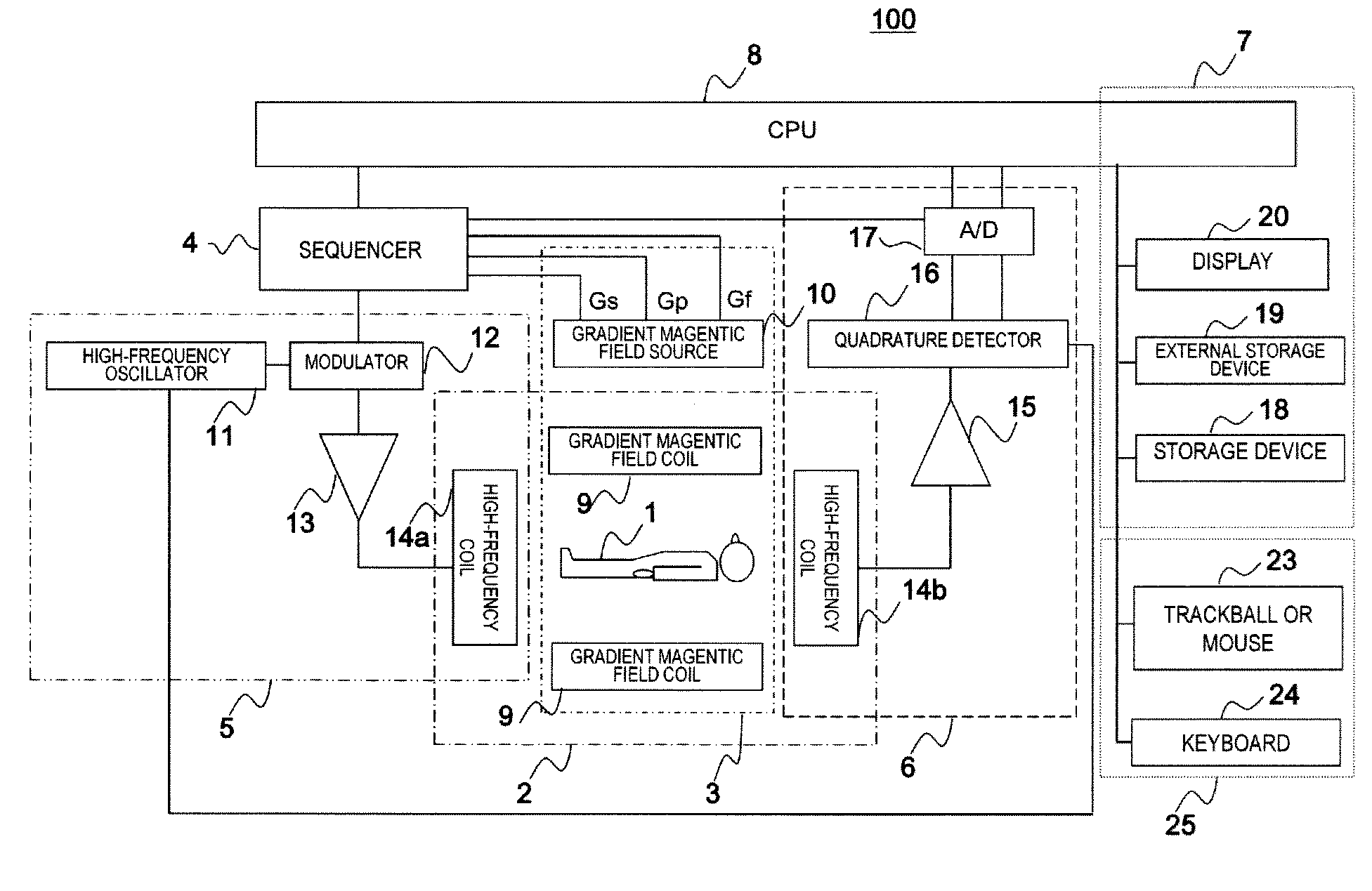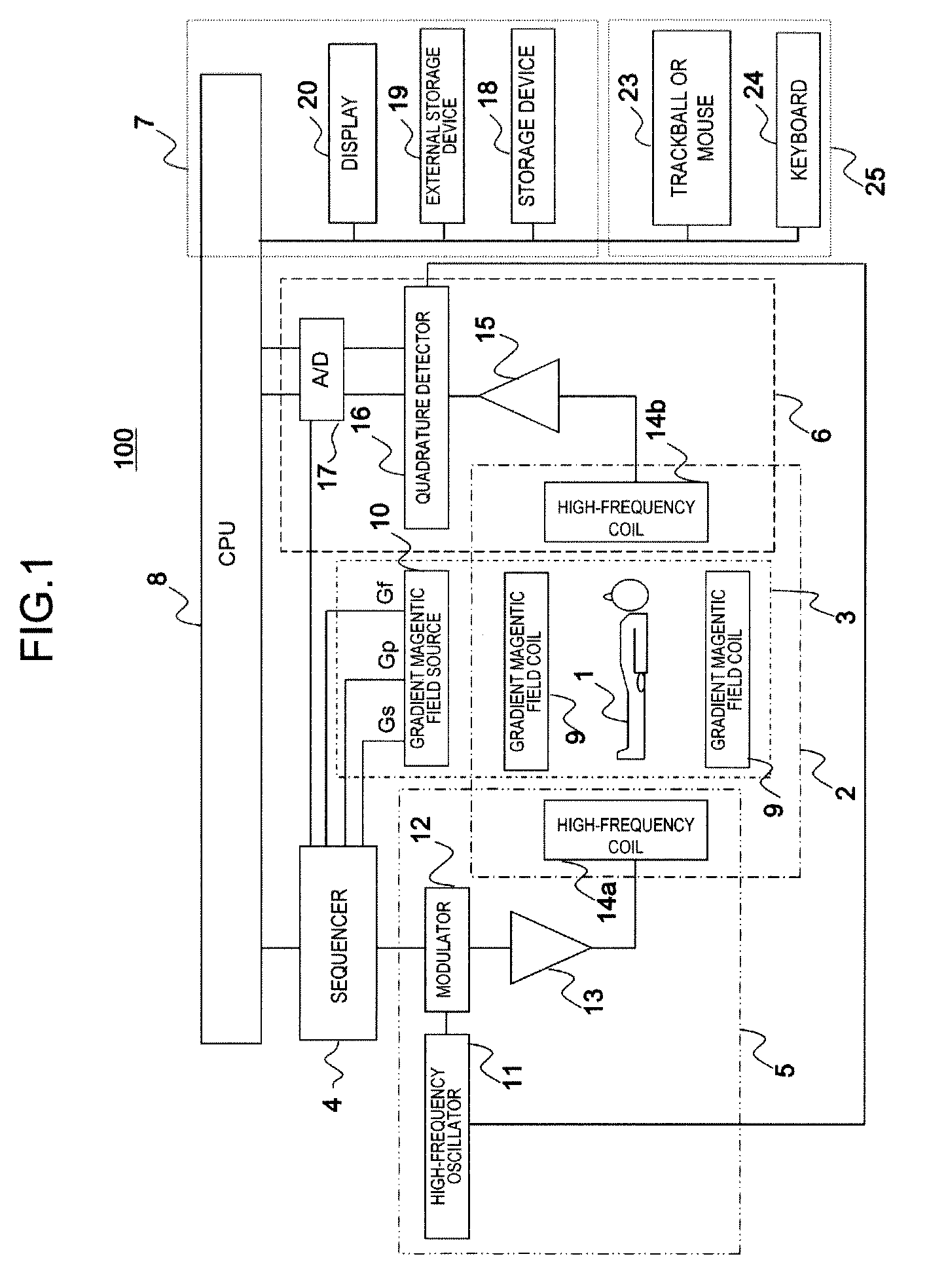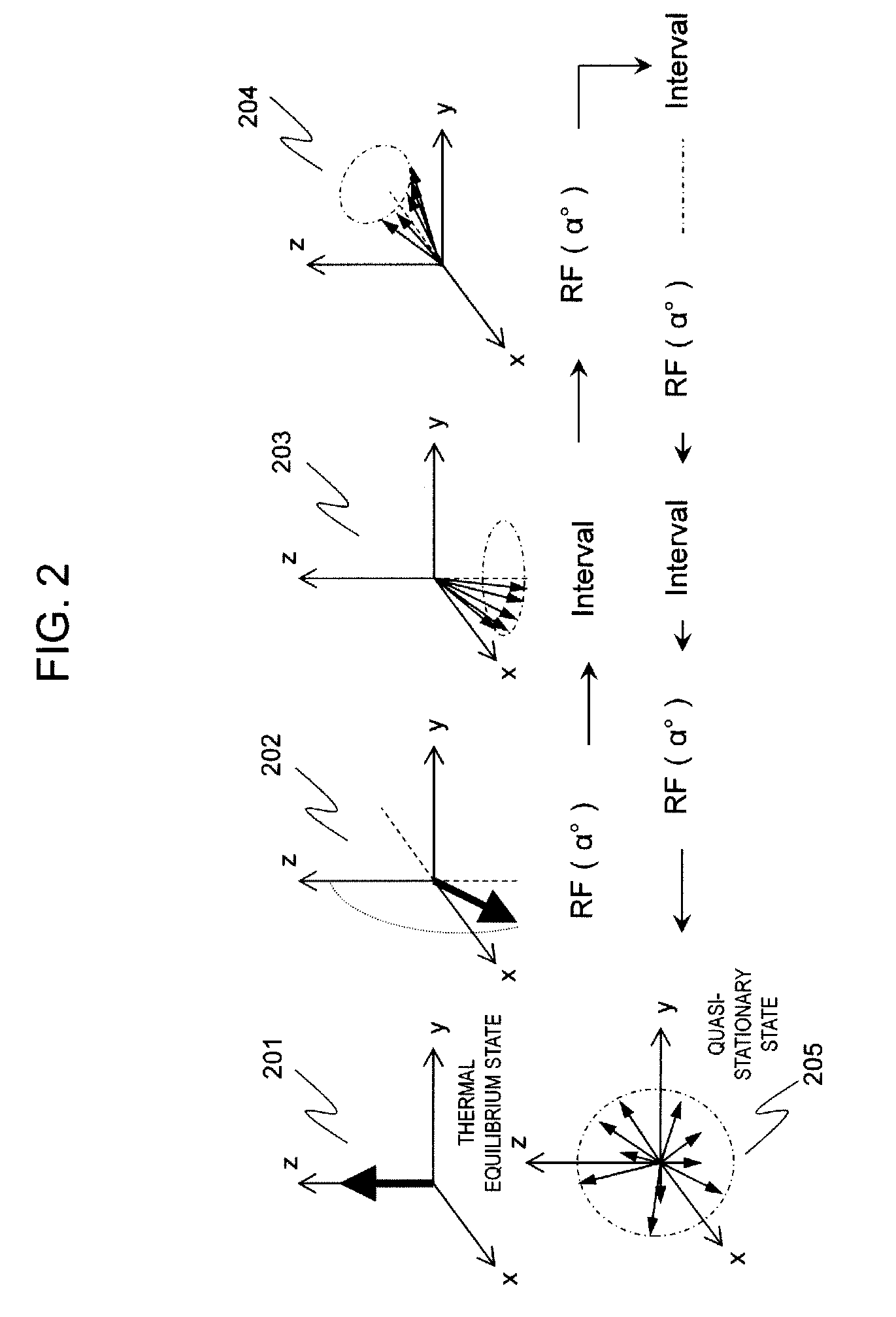Magnetic resonance imaging apparatus, initial state creation method, optimum intensity determination method, and magnetic resonance imaging method
- Summary
- Abstract
- Description
- Claims
- Application Information
AI Technical Summary
Benefits of technology
Problems solved by technology
Method used
Image
Examples
first embodiment
[0016]The first embodiment to which the present invention is applied will be described below referring to the diagrams. In the entire diagrams, the same function parts are represented by the same reference numerals, and the duplicative description thereof is omitted.
[0017]First, the overall overview of an example of the MRI apparatus related to the present embodiment will be described. FIG. 1 is a block diagram showing the general configuration of the MRI apparatus related to the present embodiment. MRI apparatus 100 is for obtaining a tomographic image of an object to be examined using NMR phenomenon, and comprises static magnetic field generation system 2, gradient magnetic field generation system 3, transmission system 5, reception system 6, signal processing system 7, sequencer 4 and central processing unit (CPU) 8.
[0018]Static magnetic field generation system 2 is for generating a uniform static magnetic field in the space around object 1 in the direction orthogonal to the body...
second embodiment
[0049]Next, the second embodiment to which the present invention is applied will be described. In the quasi-stationary generation process of the first embodiment, the quasi-stationary state generating RF pulse is repeatedly applied at the same flip angle in the same direction. However, the application direction of the quasi-stationary state generating RF pulse to be repeatedly applied is varied in the present embodiment. The flip angle stays the same. Configuration of the present embodiment will be described below exemplifying the case that the peak value of the echo signal is used for determining the reference pulse, focusing on the differences from the first embodiment.
[0050]In the present embodiment, application direction of the quasi-stationary state generating RF pulse to be repeatedly applied by the quasi-stationary state generation unit is varied as mentioned above. That is, application direction 8 is not constant as in the first embodiment, and is changed upon application. T...
third embodiment
[0062]Next, the third embodiment to which the present invention is applied will be described. In the present embodiment, a spoiler gradient magnetic field is applied after the quasi-stationary state generating RF pulse is applied in the quasi-stationary state generation process. By applying the spoiler gradient magnetic field, transverse magnetization is saturated (transverse magnetization is eliminated), and transition to the quasi-stationary state can be expedited. Configuration of the present embodiment will be described below focusing on the difference from the first embodiment. In the present embodiment also, the case of using the peak value of the echo signal will be exemplified for determination of the reference pulse.
[0063]As stated above, the spoiler gradient magnetic field is to be applied during application of the quasi-stationary state generating RF pulse in the present embodiment. The outline of the quasi-stationary state generation process to be executed by the quasi-s...
PUM
 Login to View More
Login to View More Abstract
Description
Claims
Application Information
 Login to View More
Login to View More - R&D
- Intellectual Property
- Life Sciences
- Materials
- Tech Scout
- Unparalleled Data Quality
- Higher Quality Content
- 60% Fewer Hallucinations
Browse by: Latest US Patents, China's latest patents, Technical Efficacy Thesaurus, Application Domain, Technology Topic, Popular Technical Reports.
© 2025 PatSnap. All rights reserved.Legal|Privacy policy|Modern Slavery Act Transparency Statement|Sitemap|About US| Contact US: help@patsnap.com



